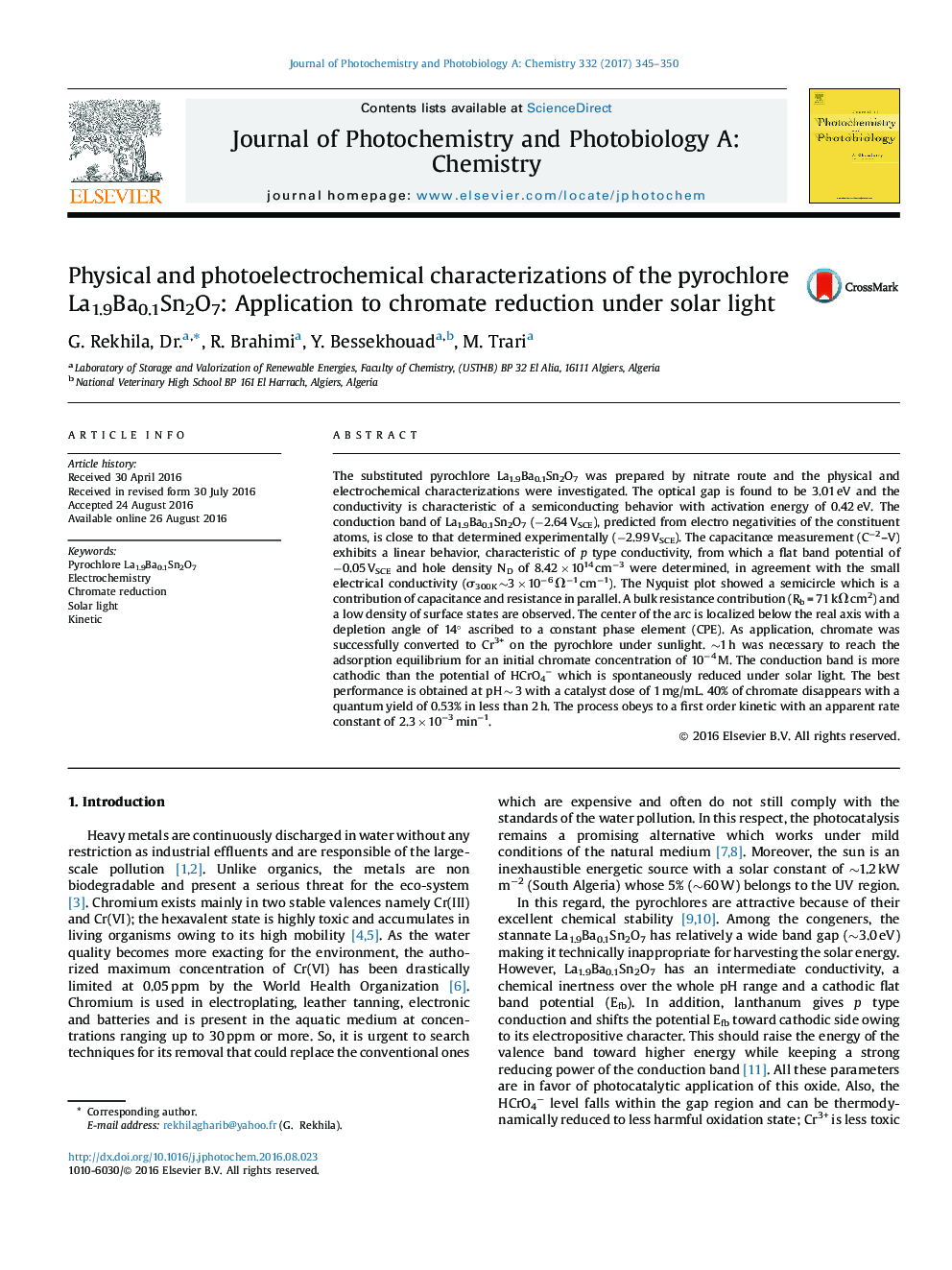| Article ID | Journal | Published Year | Pages | File Type |
|---|---|---|---|---|
| 4754229 | Journal of Photochemistry and Photobiology A: Chemistry | 2017 | 6 Pages |
Abstract
The substituted pyrochlore La1.9Ba0.1Sn2O7 was prepared by nitrate route and the physical and electrochemical characterizations were investigated. The optical gap is found to be 3.01 eV and the conductivity is characteristic of a semiconducting behavior with activation energy of 0.42 eV. The conduction band of La1.9Ba0.1Sn2O7 (â2.64 VSCE), predicted from electro negativities of the constituent atoms, is close to that determined experimentally (â2.99 VSCE). The capacitance measurement (Câ2-V) exhibits a linear behavior, characteristic of p type conductivity, from which a flat band potential of â0.05 VSCE and hole density ND of 8.42 Ã 1014 cmâ3 were determined, in agreement with the small electrical conductivity (Ï300K â¼3 Ã 10â6 Ωâ1 cmâ1). The Nyquist plot showed a semicircle which is a contribution of capacitance and resistance in parallel. A bulk resistance contribution (Rb = 71 kΩ cm2) and a low density of surface states are observed. The center of the arc is localized below the real axis with a depletion angle of 14° ascribed to a constant phase element (CPE). As application, chromate was successfully converted to Cr3+ on the pyrochlore under sunlight. â¼1 h was necessary to reach the adsorption equilibrium for an initial chromate concentration of 10â4 M. The conduction band is more cathodic than the potential of HCrO4â which is spontaneously reduced under solar light. The best performance is obtained at pH â¼Â 3 with a catalyst dose of 1 mg/mL. 40% of chromate disappears with a quantum yield of 0.53% in less than 2 h. The process obeys to a first order kinetic with an apparent rate constant of 2.3 Ã 10â3 minâ1.
Related Topics
Physical Sciences and Engineering
Chemical Engineering
Bioengineering
Authors
G. (Dr.), R. Brahimi, Y. Bessekhouad, M. Trari,
